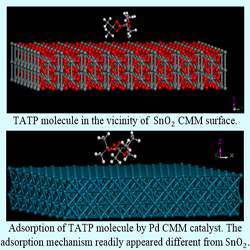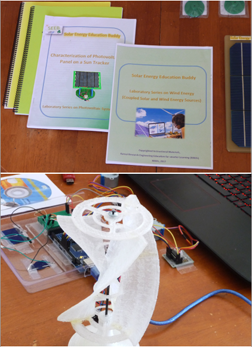Recently Funded Research projects
|
1. Consortium for Nuclear Security Advanced Manufacturing Enhanced by Machine Learning (NSAM-ML) Prof. Karoui has recently established the NSAM-ML consortium through a funding from the DOE. The consortium involves research groups from North Carolina Central University (NCCU), Elizabeth City State University (ECSU) and Southern University Baton Rouge (SUBR) under the sponsorship of the National Nuclear Security Administration (NNSA), a DOE agency. Additionally, the consortium partners with two national laboratories affiliated to the NNSA, namely Sandia National Lab (SNL) and Los Alamos National Lab (LANL), and the Center for Integrated Nanotechnology (CINT). Also, it collaborates with several research groups in majority universities that are leaders in materials science and engineering, notably NC State University (NCSU), Pennsylvania State University (PSU) in the framework of the NSF-PREM partnership, the NSF sponsored nanoMFG Node at the University of Illinois, and the nanoHUB at Perdue University. This eight-million dollar initiative started in 2020 and is funded for eight years. It encompasses cutting edge research projects in advanced manufacturing, nanomaterials for sensors, new nanosensors, materials that withstand extremely harsh conditions, functional materials for quantum devices, and materials for solar energy, as well as the physics of quantum devices, photochemistry for solar energy harvesting using nanomaterials as high efficiency catalysts,.. To perform these projects, researchers use some of the most advanced research infrastructure thanks to the partnership with DOE national labs, high performance computing, machine learning, and many unique and advanced research tools. 2. Excellence in Research on Hyperdoping Silicon with Nitrogen Project funded by NSF DMR division to understand the mechanisms of hyperdoping, the induced phase transforms, the generation of electron energy Intermediate Band (IB), and evaluation of the two-photon absorption enabled by the formed IB. 3. Integrated Optical Nanoprobe for Measuring Semiconductor Correlated Nanoscale Properties This DOD major instrument sponsored project aims at 1) acquiring a major instrument with more than 14 customized optical nanoscale characterization techniques of semiconductors and other materials, 2) develop correlated analysis methods, and 3) implement newly invented methods to map strain in materials with submicron resolution, submicron scanning of minority carrier lifetime in semiconductors, time dependent decay and diffusion of charge carriers, composition analysis of recombination centers and charge carrier traps, and injection level spectroscopy for analysis and identification of recombination centers. |
|
|
|
Other Recently Funded Research projects • Exploring Chemical and Bio- Sensors Operating at the Quantum Frontiers (DoD, DTRA, Deputy Assistant Secretary of Defense). • Fast, Large-Scale, Inexpensive Nanoscale Fabrication Process for Advanced Manufacturing (DoD, ARDEC). • Multiscale modeling of TATP Explosive sensor elements (DHS) • Electron Localization and Chaos in Quantum Dot (QD) Arrays for nanoelectronic devices (NCCU NSF-CREST). • Design, Fabrication, and Characterization of new High Efficiency Third Generation Solar Cells (DoD). • Nanoscale Characterization of Ge and SiGe QDs for Optoelectronic and Photovoltaic Devices (DoD). |


